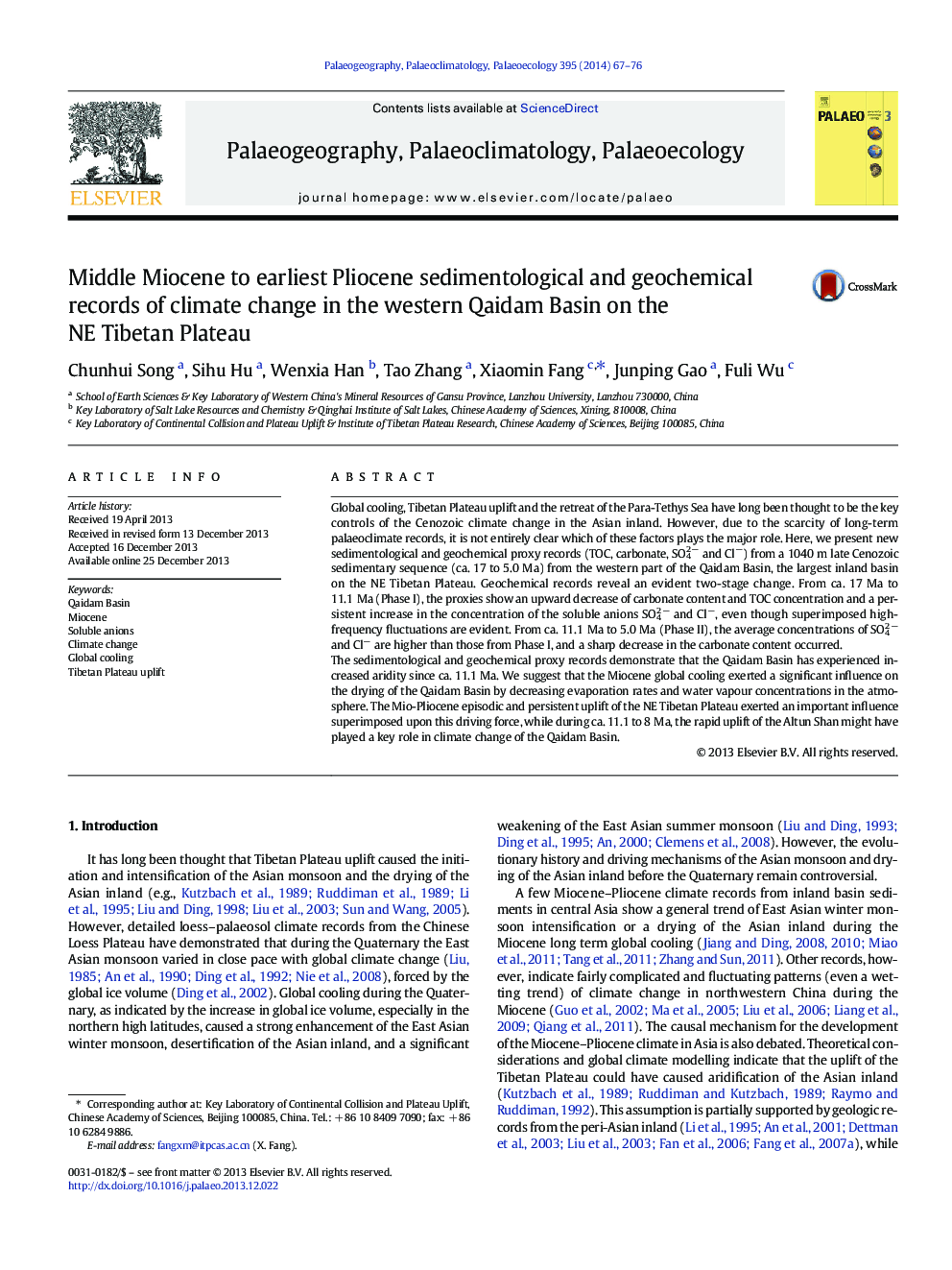| کد مقاله | کد نشریه | سال انتشار | مقاله انگلیسی | نسخه تمام متن |
|---|---|---|---|---|
| 4466386 | 1622195 | 2014 | 10 صفحه PDF | دانلود رایگان |

• The 1040 m late Cenozoic sedimentological and geochemical proxy records
• Long-term and persistent drying of the Asian inland since the middle Miocene
• Global cooling played a key role on the Miocene climate of the Qaidam Basin.
• Mio-Pliocene uplift of Tibet Plateau might exert some influence.
Global cooling, Tibetan Plateau uplift and the retreat of the Para-Tethys Sea have long been thought to be the key controls of the Cenozoic climate change in the Asian inland. However, due to the scarcity of long-term palaeoclimate records, it is not entirely clear which of these factors plays the major role. Here, we present new sedimentological and geochemical proxy records (TOC, carbonate, SO42 − and Cl−) from a 1040 m late Cenozoic sedimentary sequence (ca. 17 to 5.0 Ma) from the western part of the Qaidam Basin, the largest inland basin on the NE Tibetan Plateau. Geochemical records reveal an evident two-stage change. From ca. 17 Ma to 11.1 Ma (Phase I), the proxies show an upward decrease of carbonate content and TOC concentration and a persistent increase in the concentration of the soluble anions SO42 − and Cl−, even though superimposed high-frequency fluctuations are evident. From ca. 11.1 Ma to 5.0 Ma (Phase II), the average concentrations of SO42 − and Cl− are higher than those from Phase I, and a sharp decrease in the carbonate content occurred.The sedimentological and geochemical proxy records demonstrate that the Qaidam Basin has experienced increased aridity since ca. 11.1 Ma. We suggest that the Miocene global cooling exerted a significant influence on the drying of the Qaidam Basin by decreasing evaporation rates and water vapour concentrations in the atmosphere. The Mio-Pliocene episodic and persistent uplift of the NE Tibetan Plateau exerted an important influence superimposed upon this driving force, while during ca. 11.1 to 8 Ma, the rapid uplift of the Altun Shan might have played a key role in climate change of the Qaidam Basin.
Journal: Palaeogeography, Palaeoclimatology, Palaeoecology - Volume 395, 1 February 2014, Pages 67–76